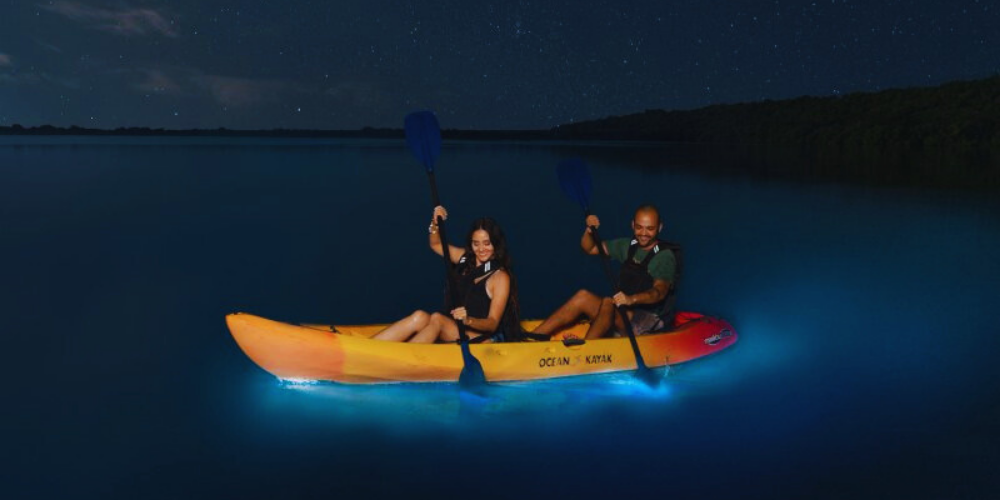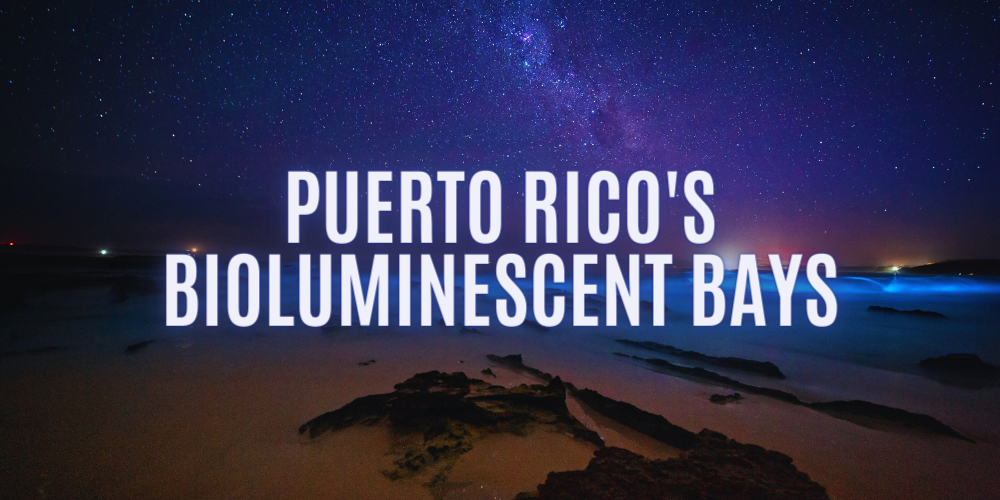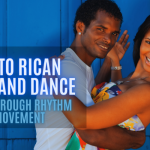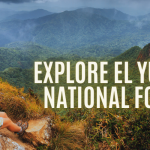Puerto Rico, an island teeming with vibrant culture and stunning natural landscapes, is home to some of the world’s most extraordinary natural phenomena: its bioluminescent bays. These glowing waters, caused by microscopic organisms, offer a magical view of the natural world and are a must-see for anyone visiting the island. This guide provides a deeper look into the unique features of each bay and offers practical advice for planning your visit to ensure a responsible and unforgettable experience.
Understanding Bioluminescence in Puerto Rico
Bioluminescence is a natural phenomenon produced by organisms like dinoflagellates, which emit a mesmerizing light when disturbed. This phenomenon is particularly magical in Puerto Rico due to the island’s pristine coastal conditions and the protective mangrove forests that surround these waters, fostering an ideal environment for dinoflagellates to thrive.

Puerto Rico’s Bioluminescent Bays
Puerto Rico is privileged to host three of the world’s most luminescent bays:
Mosquito Bay (Vieques)
Often acclaimed as the brightest bioluminescent bay globally, Mosquito Bay’s glowing waters are best experienced during new moons when the sky is at its darkest. The bay is under strict conservation measures to maintain its brightness, with swimming prohibited to preserve the dinoflagellates. Nighttime kayaking here allows for an immersive experience, paddling through waters that light up with each stroke.
Laguna Grande (Fajardo)
The mystical Laguna Grande is surrounded by dense mangroves, which add to the bay’s secluded and enchanting atmosphere. The bay is accessible through guided kayak tours that navigate through narrow channels, opening up to a large lagoon where the waters glow brightly beneath the stars. These tours not only provide a breathtaking visual experience but also educate visitors about the bay’s critical ecological role.
La Parguera (Lajas)
La Parguera offers a unique opportunity where visitors can swim in the bioluminescent waters. This bay, which had previously suffered from the effects of over-tourism, is now focusing on recovery through sustainable tourism practices. Nightly boat tours allow you to dive into the luminous water, creating an intimate and interactive experience with nature.
Tips for Planning Your Visit
Optimal Timing
The bioluminescence can be best observed during the darkest conditions, typically around a new moon. Try to avoid visiting during the rainy season as fresh water can decrease the salinity needed for dinoflagellates to flourish.
Essential Gear
Dark clothing is recommended to reduce light pollution, enhancing your ability to see the bioluminescence. Water shoes will help with stability and protection in and out of kayaks or when swimming. Use only biodegradable sunscreen and refrain from applying insect repellent if you plan to enter the water, to minimize ecological impact.
Selecting a Tour
Choose responsible tour operators who prioritize environmental conservation. These providers ensure minimal ecological impact and offer the most informative and respectful experience possible.
Supporting Conservation Efforts
The bioluminescent bays are fragile ecosystems sensitive to environmental changes, including pollution and climate variation. By selecting eco-friendly tours and adhering to local guidelines, you help support the conservation of these unique environments. Consider engaging with local conservation programs that work to preserve these natural wonders.
A visit to Puerto Rico’s bioluminescent bays offers more than just a chance to see the water glow; it’s an opportunity to connect deeply with one of nature’s most fascinating displays. Whether you’re kayaking through Mosquito Bay, exploring Laguna Grande, or swimming in La Parguera, these experiences are not only breathtaking but also a reminder of the beauty and fragility of our natural world. Prepare for a journey that’s both illuminating and inspiring, leaving you with lasting memories of Puerto Rico’s glowing waters.








[…] the magic of kayaking in a bioluminescent bay. These guided nighttime tours are a fantastic way to see the natural phenomenon of glowing […]
[…] Have you experienced the nightlife in Puerto Rico, or do you have a favorite spot for live music and dancing on the island? Share your stories and recommendations in the comments below. Don’t forget to share this guide with fellow travelers looking for an unforgettable night out in Puerto Rico! […]
[…] Vieques’ bioluminescent bay offers a magical experience where microorganisms light up the water at night. To protect this […]
[…] is the production and emission of light by living organisms. In the case of Puerto Rico’s bioluminescent bays, this light comes from tiny marine plankton known as dinoflagellates. When these organisms are […]
розкрутка сайту під ключ